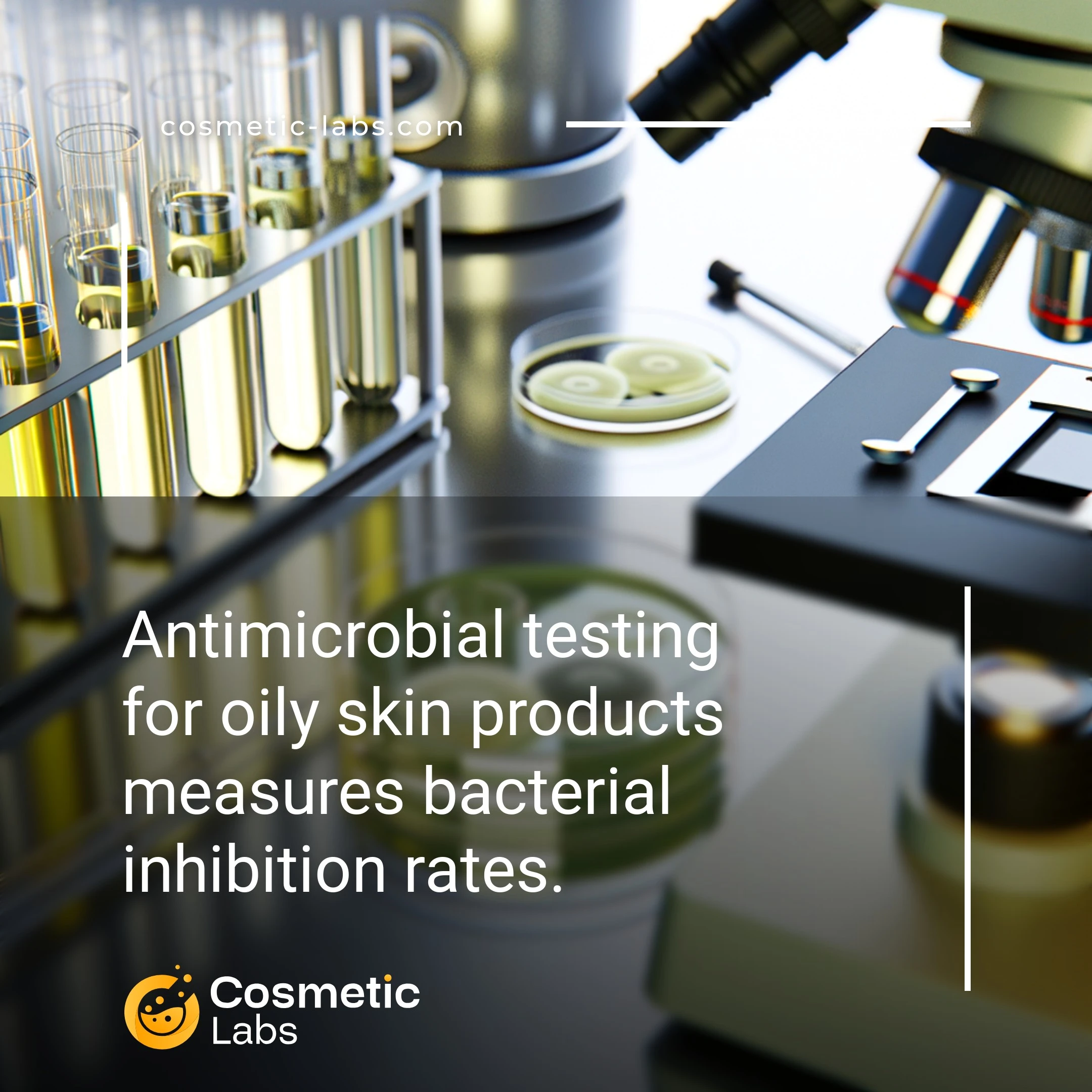Antimicrobial Testing for Oily Skin Cosmetic Products

What is Antimicrobial activity?
Antimicrobial efficacy testing for oily skin products evaluates how well cosmetic formulations control bacterial growth and prevent acne-causing microorganisms like P. acnes. Our partner labs use standardized protocols including minimum inhibitory concentration (MIC) assays and time-kill studies to measure your product’s antimicrobial potency against specific skin pathogens. This testing proves your formulation’s ability to maintain skin microbiome balance while reducing breakouts—data that’s particularly valuable for acne treatments and oil-control serums targeting consumers with problematic skin.
Why do you need this service?
Cosmetic labs on our platform conduct antimicrobial efficacy testing for oily skin formulations to validate acne-fighting ingredients like salicylic acid, benzoyl peroxide, and tea tree oil against P. acnes bacteria. Brands submit cleansers, serums, and spot treatments for microbial challenge testing that generates clinical data required for regulatory approval and marketing claims about bacteria reduction percentages within 24-48 hours.
Who provides Antimicrobial activity services?
All cosmetic labs providing Antimicrobial activity services
There is no company providing these services at the moment.
Antimicrobial Testing for Oily Skin Products
Antimicrobial efficacy testing validates how well your oily skin formulations control bacterial growth and prevent acne-causing microorganisms. Labs on our platform run targeted assays that measure your product’s ability to inhibit Propionibacterium acnes and other skin pathogens common in sebum-rich environments.
Bacterial Challenge Testing Methods
Testing labs use standardized protocols to evaluate your formulation’s antimicrobial performance against specific bacteria strains. They expose cultured microorganisms to your product at various concentrations and measure inhibition zones or minimum inhibitory concentrations (MIC).
Common testing parameters include:
- Zone of inhibition measurements against P. acnes
- Time-kill studies over 24-48 hour periods
- Biofilm disruption assays for persistent bacteria
- Synergistic activity testing with multiple active ingredients
Sebum Compatibility Assessment
Labs test how your antimicrobial ingredients perform in oil-rich conditions that mimic oily skin environments. They create artificial sebum matrices and measure antimicrobial activity retention when your actives interact with lipids and fatty acids.
This testing reveals whether your formulation maintains potency in high-sebum conditions or requires reformulation. Labs also check for potential interactions between antimicrobial agents and sebum-regulating ingredients like niacinamide or salicylic acid that might affect overall product performance.
Ready to validate your oily skin formulation’s antimicrobial properties? Connect with specialized testing labs on our platform to discuss your specific product requirements and testing protocols.
Practical Applications of Antimicrobial Testing for Oily Skin Products
Cosmetic labs use antimicrobial activity testing for oily skin formulations to validate product safety and efficacy claims before market launch.
Acne Treatment Product Development
Labs evaluate antimicrobial efficacy against Propionibacterium acnes and Staphylococcus epidermidis using standardized protocols like ASTM E2315. Testing protocols measure minimum inhibitory concentrations (MIC) and zone of inhibition diameters to quantify bacterial suppression. Results typically show 90-99% bacterial reduction within 24-48 hours for effective formulations.
Brand owners receive detailed reports showing bacterial colony counts, time-kill curves, and comparative data against benchmark products. This data supports FDA registration and marketing claims for acne-fighting ingredients like salicylic acid, benzoyl peroxide, and botanical extracts.
Sebum Control Product Validation
Testing services assess how oil-control formulations affect skin microbiome balance while maintaining antimicrobial protection. Labs use sebum simulation models combined with bacterial challenge tests to evaluate product performance on oily skin conditions. Standard testing includes 7-day bacterial growth inhibition studies and compatibility assessments with common oily skin ingredients.
Data shows effective formulations maintain antimicrobial activity while preserving beneficial skin bacteria. Results guide formulation adjustments for products targeting excess sebum production without disrupting natural skin barrier function.
| Test Method | Target Organisms | Timeframe | Key Metrics |
|---|---|---|---|
| ASTM E2315 | P. acnes, S. epidermidis | 24-48 hours | MIC, zone diameter |
| Time-kill assay | Mixed skin flora | 7 days | Log reduction, CFU counts |
| Sebum model testing | Oily skin pathogens | 14 days | Bacterial inhibition % |
Connect with experienced cosmetic labs on our platform to discuss antimicrobial testing requirements for your oily skin product development projects.
